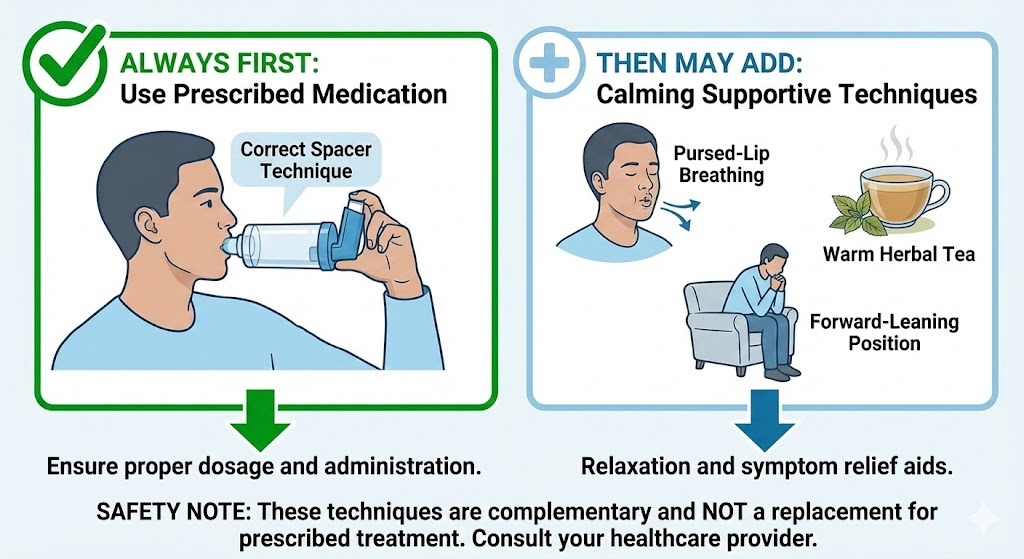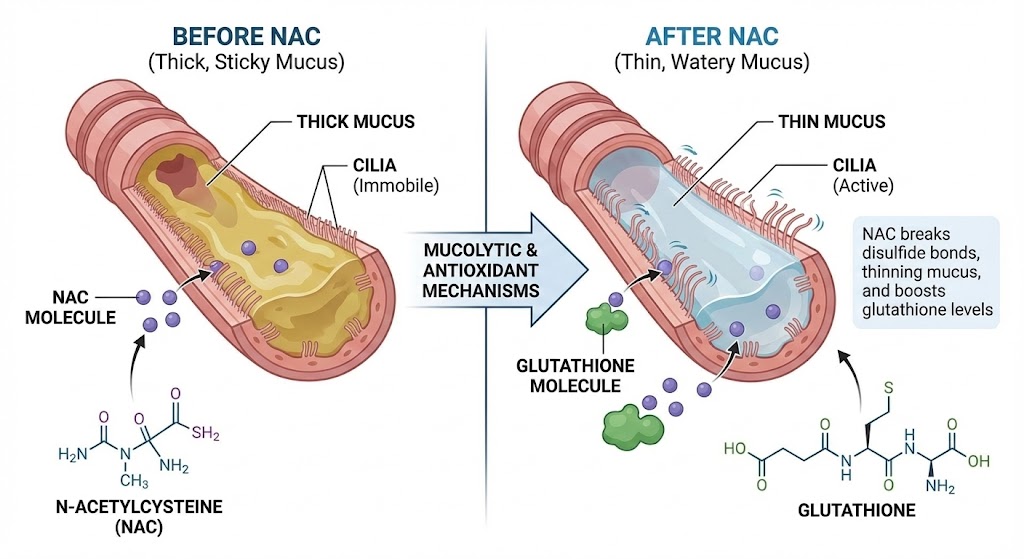If you’ve tried everything for a stubborn cough, wheezing, or that constant feeling of mucus in your chest, you might be overlooking a crucial piece of the puzzle: your vagus nerve.
This long, wandering nerve is your body’s superhighway for communication between your brain, heart, gut, and lungs. It controls your “rest and digest” system, directly influencing inflammation, mucus production, and those frustrating coughing fits.
When your vagus nerve is out of balance—often due to stress, poor posture, or chronic inflammation—it can exacerbate lung issues. The good news? You can actively tone and calm this nerve for near-instant relief.
How Your Vagus Nerve Controls Your Breathing
Think of your vagus nerve as the chief relaxation officer of your body. It’s responsible for:
- Slowing your heart rate after a stressor.
- Stimulating digestion and gut health.
- Regulating your inflammatory response.
- Controlling the cough reflex and airway constriction.
A “toned” or strong vagus nerve helps you stay calm, recover from stress quickly, and keeps inflammation in check. A weak one can lead to a heightened state of alarm, making you more prone to coughing, wheezing, and breathlessness.
This is why stress is a major trigger for conditions like COPD and asthma. It’s not “all in your head”—it’s a direct line from your brain to your lungs via the vagus nerve.
3 Vagus Nerve Hacks for Instant Calm and Better Breathing
You don’t need medication to influence this powerful nerve. Here are three simple, doctor-approved techniques.
1. The Extended Exhale (The 7-Second Secret)
This technique is a direct lever for your vagus nerve. By making your exhale longer than your inhale, you signal your nervous system to shift into “rest and digest” mode.
- How to do it: Sit comfortably. Inhale gently through your nose for a count of 4. Now, exhale slowly and controlled through pursed lips for a count of 7. Repeat for just 1-2 minutes.
- Why it works: The extended exhale increases pressure in your chest, stimulating the vagus nerve and naturally slowing your heart rate. This is a core component of the powerful breathing patterns we discuss in our guide on Pursed-Lip Breathing: How to Stop Shortness of Breath Instantly.
2. Humming or Chanting “OM”
It might sound simple, but humming is a powerful vagus nerve stimulator because the nerve passes directly through your vocal cords.
- How to do it: Take a normal breath in. As you exhale, create a low, steady “hmmmm” sound, feeling the vibration in your chest and throat. Try this for 30-60 seconds.
- Why it works: The vibrations from humming massage and stimulate the vagus nerve, promoting relaxation and helping to break up stagnant mucus. For a more structured practice, combine this with Diaphragmatic Breathing: The #1 Exercise to Strengthen Your Lungs & Calm Your Mind.
3. Cold Exposure Splash
A sudden, brief cold stimulus to the face triggers the “diving reflex,” which immediately engages the vagus nerve to slow the heart rate and promote calm.
- How to do it: At the end of your morning shower, splash your face with cold water for 15-20 seconds. Or, hold a cold pack over your eyes and cheeks.
- Why it works: This is a quick “reset button” for an overactive nervous system, helping to reduce the anxiety that can often accompany feeling short of breath.
Beyond Quick Fixes: A Holistic Approach to Vagus Nerve Health
Stimulating your vagus nerve is powerful, but for lasting change, it works best as part of a comprehensive plan.
- Anti-Inflammatory Nutrition: Chronic inflammation weakens vagal tone. Focus on incorporating The Lungs’ Best Friends: Top 5 Anti-Inflammatory Foods for Breathing into your diet, while avoiding Foods That Cause Mucus: The Top 5 Culprits to Avoid.
- Move and Stretch: Gentle movement and specific stretches, like the ones found in our guide to the Best Yoga Poses for Lung Capacity and Chest Opening, improve posture and blood flow, supporting nerve function.
- Address the Root Cause: Sometimes, the problem isn’t just the nerve, but what’s irritating it. If you’re constantly clearing your throat or dealing with stubborn phlegm, it’s crucial to understand the underlying message. Our Mucus Color Chart: What Your Phlegm Says can be a vital diagnostic tool.
The Bottom Line
Your body has an innate ability to heal and find balance. By understanding and working with your vagus nerve, you move from just managing symptoms to actively promoting resilience and calm from the inside out.
For a step-by-step plan that incorporates these vagus nerve techniques with diet, detox, and other natural strategies, our comprehensive resource, The Ultimate Guide to Clearing Mucus & Restoring Lung Health Naturally, is the perfect place to start your journey to deeper, easier breathing.
Ready to take the next step? Discover your personal lung health score and get a customized action plan by taking our quick and free The 2 Minute Lung Health Quiz.
Soothe Your Vagus Nerve & Calm Your Cough
While breathing exercises stimulate your vagus nerve externally, Breathe Drops work internally to calm throat irritation, reduce inflammation, and support your body’s natural relaxation response.











